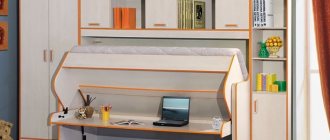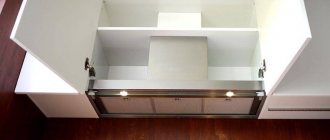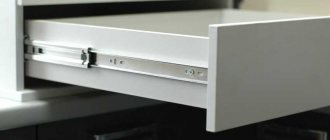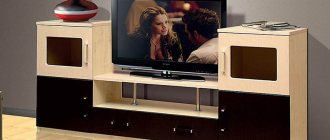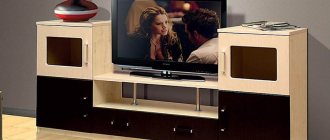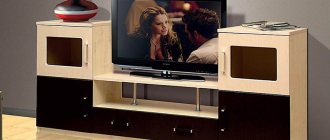Lifting equipment is a wide group of mechanisms designed for hanging, fixing and moving heavy loads. The conditions for performing such work may be different, which also causes differences in the designs of the tools used. Today, lifting mechanisms are widely used in construction, industry, when organizing transportation, and even in private households.
Main characteristics of the equipment
Lifting devices are very diverse, but there are several general parameters by which their performance is assessed. The main characteristic is the amount of mass with which a particular device is capable of working. On average, lifting mechanisms are designed for 5-10 tons. However, the range of this value can go far beyond the specified corridor. For example, devices that are part of large-format cargo equipment are involved in lifting weights up to 100 tons. On the contrary, single mechanisms used in car services and small workshops are often oriented towards working with 500-700 kg loads.
When choosing, you should also take into account the range of movement of target objects. For example, hoists and winch systems usually lift loads 15-20 m. Movements in horizontal directions no longer depend on the mechanism itself, but on the local fixing infrastructure. In warehouses, this is done using rails and roller mechanisms along which equipment moves. Much determines the purpose of lifting mechanisms - in one case, only fixation with retention may be required, and in another, transportation.
Varieties
Lifting devices differ in many ways. From a design point of view, we can distinguish jacks, hoists, winches, hoists and other mechanisms, which, however, have a lot in common. In this case, individual devices can be mechanical and electrical. The first option works using hydraulics or manual force. It is less convenient, but in most cases it turns out to be more reliable and efficient. Electric units, as a rule, allow you to handle larger loads. But their main advantage lies in the possibility of automated control. Using a pre-installed remote control in the same warehouses, the operator can remotely direct the cargo to its destination. It is also worth noting the differences in functionality. There are stationary lifting mechanisms and movable ones, which were already mentioned above. Stationary devices include jacks and classic winches. Usually they are used only for lifting a load with the ability to hold it. Movable mechanisms also imply the possibility of transporting cargo in different directions. Now it’s worth familiarizing yourself with the different types of lifting mechanisms in more detail.
Rock or pull
A manual hoist has modest dimensions and consists of a drum with a wound cable, a transmission mechanism and a drive.
According to the type of transmission mechanism, hoists are divided into worm and gear
. It is worth noting that the worm mechanism gives a greater gain in strength, but due to friction of the parts it breaks more often. The gear mechanism has proven to be more reliable.
Depending on the type of drive mechanism, there are lever and chain hoists.
. In the case of a lever drive, lifting occurs due to the oscillatory movements of the drive lever, carried out manually. The chain hoist has two chains, traction and load. The device is suspended on a beam, the slings are attached to a hook, and the worker pulls the traction chain until the load is raised to the desired height. A feature of modern designs is a new patented mechanism that allows the worker to be away from the load being lifted.
Jacks
This is the simplest tool from the group of lifting equipment, which is often used both in everyday life and in auto repair shops. The operating principle of the jack is based on hydraulics, which eliminates the need for the user to exert great physical effort. The advantages of this variety include mechanical resistance and protection from external influences, including temperature. Also, depending on the conditions of use, the jack is able to provide a smooth ride, which is important when working with fragile loads. There are several types of this mechanism. For example, bottle models are considered a classic design - they provide a smooth and precise ride when lifting. Roll-on modifications are produced especially for auto repair shops. Such lifting mechanisms are convenient because they allow gripping without moving the target equipment. To lift a car, for example, it is enough to place a rolling jack under the area required for work. Screw modifications are also common. They differ in that instead of conventional hydraulics, the mechanical principle of lifting is used by unwinding through a thread.
Winch lifting mechanisms
The winch is popular in various areas of cargo handling. Its operation is based on the force transfer principle, which gives a significant gain in force at the output. The winch can be suspended or installed on a stable surface. Then, depending on the assigned tasks, it moves in a horizontal or vertical plane. The most common type of this mechanism is a lever winch, the design of which is universal and allows you to perform work on a construction site or production workshop.
More modern electric models are also used. The advantages of this type include the ability to work with large masses. Moreover, the traction force in this case can be adjusted to a certain speed. When choosing, you should also take into account the material of manufacture. For example, a lever winch can be connected to the object being serviced by means of a metal or synthetic rope cable. In the first case, steel fibers are often used, which can be protected from corrosion thanks to special coatings. Also, metal cables benefit from strength, but if they break, there is a risk of injury and equipment damage. As for synthetic ropes, they are less wear-resistant, but weigh less and are not so dangerous when broken.
Using lifting mechanisms: theory and practice
Types of lifting mechanisms.
Load-lifting mechanisms are classified according to:
purpose; operating principle; design. Mechanisms perform various technological operations depending on their size and technical characteristics. To automate processes in many industries, a variety of lifting equipment is used: jacks; hoists; winches; lifts; cranes of all types; elevators. Rostechnadzor has established that permanently installed lifting mechanisms are subject to mandatory registration, since they belong to the category of hazardous production facilities. The presence of such machines at the enterprise must be entered into the state register. Safety comes first! Working with such equipment poses a danger to workers. Therefore, a set of rules for the safe operation of lifting mechanisms has been compiled by order of Rostechnadzor. According to them, when working with equipment it is not allowed: to approach the mechanism while moving; use unreliable slinging schemes; lift and move loads together with people; turn on the control mechanism when people interact with the equipment; work with a faulty machine or mechanism; deliver heavy loads to unsuitable areas (windows, balconies); level the load or adjust the slings while hanging; stretch fixed containers along the ground; tear off cargo that is icy, concreted or secured in other ways. Compliance with the rules for working with lifting equipment guarantees the safety of life and health. Violation of them may result in suspension or a fine. Equipment of workplaces, requirements for a hydraulic lifting machine operator. Permission to work with lifting mechanisms can be obtained by an employee over 18 years of age who has undergone special training and studied the safety rules. The company must require a medical certificate from him, which indicates that due to health reasons he can operate this equipment. The worker must know and comply with all points of the instructions, namely: general requirements; techniques for starting work safely; tactics of behavior during the work process; labor protection requirements in emergency situations; operations that must be performed at the end of the shift. It is necessary that the organization of the workplace ensures the smooth operation of the equipment. Load-lifting cranes located at height must be equipped with ladders and stepladders. In cases where the workplace is located above 5 meters from the ground, it is provided with safety equipment for self-evacuation of workers. All requirements and rules are collected in regulatory documents on labor protection when working with lifting mechanisms.
Cargo and gripping elements Steel cables play the role of cargo elements, guy ropes, load-bearing ropes, and flexible slings. They come in single, double and triple lay, depending on the load-carrying capacity of the mechanism. The variety of ways of mutual direction of the wire provides variability in the strength characteristics of the cable. Loads are grabbed using various gripping devices. The most widely used for this purpose are hooks and loops. There are also special load-handling devices. They are most often suspended from permanent crane fasteners. Hooks are made by stamping or forging; there are single and double hooks. Foundry production does not provide the necessary technical characteristics of fastening elements, therefore it is not used for their production. The main requirement for the equipment is the presence of a safety lock, which will prevent the removable load-handling device from accidentally falling out. Hooks are selected according to the strength calculation performed.
Necessary equipment checks Any malfunction of lifting mechanisms poses a danger to workers, maintenance personnel and other people in the area of their operation. To eliminate or minimize possible risks, equipment operation is monitored. When checking PGMs controlled from the floor, the commission pays attention to the following points: serviceability of components and mechanisms; reliability of cables and fastenings; wear and deformation of metal structures; suitability of electrical parts; operability of control electronics, light and sound alarms. Partial technical inspection (PTO), according to Rostechnadzor standards, is carried out at least once a year. It involves troubleshooting without load testing the lifting machine. A complete technical inspection (PTO) is carried out every three years. If necessary, the procedure can be performed unscheduled. This is practiced in case of breakdowns or emergency situations.
Technical checks for the serviceability of mechanisms During technical inspection, in addition to visual inspection, static loads are applied to check the strength of metal structures and the likelihood of them tipping over. A load weighing 25% more than permissible is attached and raised above the surface by 200–300 mm and held in this position for 10 minutes. In this case, parts of the crane are installed in a position with the highest probability of deflection and the least stability. After lowering, check for possible deformations. Dynamic tests show the performance of the lifting mechanism. The machine is loaded with a weight that is 10% greater than the permissible weight. The test is repeated several times, raising and lowering the load. The cables are examined for breakage and the strength of load-handling devices. After checking, the hook is stamped and provided with a tag. Monitoring the proper operation of equipment is carried out by the Rostechnadzor inspection together with the technical supervision service of the enterprise itself.
Tali
This mechanism is more often used in production workshops, warehouses and transport service complexes. Its standard design is formed by two clamps-hooks and a chain along which lifting is realized. On the market you can find manual and electric hoists that can be used in automated conveying lines. Manual models are usually used for lowering and horizontal movements on special rails. This option is practical and convenient when working with small loads, but it will be ineffective when servicing large-sized shipments.
Electric hoists have a wide range of load capacities. They can be both stationary and mobile. In the second case, the device is installed in the infrastructure of monorail lines with I-beams. In terms of performance, standard electric hoists provide a lifting height of 3-10 m. In this case, a turning radius of 1 m is also allowed. The choice should also take into account the lifting speed - this parameter is important from the point of view of optimizing the flow process. The average speed is 4 m/min.
Lifting machines and mechanisms
Category: Shop equipment
Lifting machines are cyclic machines and include lifts and lifts, cranes, hoists, hoists, lifting tables, etc.
Elevators of various load capacities are widely used in warehouses and shops. An elevator is a lifting and transport device operating in intermittent mode and designed
Classification of handling equipment
| Signs | Groups of handling equipment |
| By functional purpose | Lifting; transporting; loading and unloading |
| By degree of mobility | Stationary; mobile with limited movement; self-propelled with unlimited movement |
| By type of energy driving the equipment | Electrically driven; with an internal combustion engine; mechanical action; manual action; gravitational action |
| By type of cargo processed | For reloading packaged goods; for reloading bulk bulk goods; for pumping and draining liquid cargo |
| By the nature of cargo movement | Periodic action; continuous action |
| According to the degree of mechanization of processes | Means of small-scale mechanization; means of complex mechanization; automation tools |
for lifting and lowering loads from one level to another. Freight elevators are divided into:
• release (with a load capacity from 500 to 3200 kg);
• general purpose (from 400 to 6300 kg);
• sidewalk (500 and 630 kg);
• small store-bought ones (100 and 250 kg).
Elevators are supplied to trade enterprises with remote and local control, with a load capacity from 100 to 6300 kg, a cabin speed of 0.08-0.5 m/s, and a cabin (platform) lifting height of 5.2-45 m.
The small freight elevator type LG-241 consists of a shaft, a cabin, a counterweight, an electric winch and electrical appliances. Shaft 1 is fenced on all sides with sheet steel. At the bottom of the shaft there are stops for stopping the cabin and a counterweight in case of lowering
lowering them below the working position and hanging cable 5. In the upper part of the shaft there is a machine room, closed by front and side doors 4. On the side of the floor platforms in the shaft there are double-leaf swing doors 2, which can be opened manually. They have manual and automatic locks. Automatic locks do not allow doors to be opened when there is no cabin on the floor. Vertical guides are fixed inside the shaft, along which the cabin 6 and the counterweight 10 move. The counterweight is connected to the cabin by ropes 7 and serves to balance its mass.
The cabin consists of a body and fences that form the floor, ceiling, side and rear walls. At the front of the cabin there is an open opening used for loading and unloading operations. Pass-through type cabins with open openings on both sides are also manufactured. The cabins are equipped with catchers that automatically stop it when the ropes break or there is sudden acceleration. The engine room houses an electric winch 8, which consists of an electric drive, a brake, a traction pulley and a pulley block 9. When the winch is turned on, the cabin and counterweight are raised or lowered.
Small freight elevator type JIT-241: 1 - shaft; 2 - swing doors; 3 — push-button posts; 4 - front and side doors; 5 - hanging cable; 6 — cabin; 7 - ropes; 8 — winch; 9 — tap block; 10 - counterweight
The elevator is equipped with interlock and limit switches, floor switches, an electrical panel, push-button stations and other devices.
Interlock switches prevent the elevator from starting when the doors are open. Limit switches stop the elevator when the car is raised or lowered beyond the permissible level. Floor switches stop the car opposite the floor landings. The electrical panel has a circuit breaker, magnetic starters, fuses and other electrical appliances. The shield is mounted on the outer wall of the engine room. A switch is mounted next to the switchboard to connect the elevator to a three-phase electrical network. Push-button posts 3 are located next to the shaft doors. The post has buttons “Up”, “Down”, “Call”, “Stop” and a “Busy” signal lamp, which lights up when the shaft doors are opened and while the cabin is moving.
A cargo lift is a lifting device designed to lift cargo on a platform or cabin between two floors. Unlike elevators, elevators have a simpler design and are more convenient to use. The most widely used at retail trade enterprises are inclined lifts and elevators for moving goods weighing up to 200 kg, packed in bags, boxes, and barrels. If the elevator has one platform for cargo, then the elevator has several platforms rigidly attached to the traction element.
The inclined lift PN-200 is designed for installation inside a store and consists of upper and lower railings, a truss, a platform and a drive.
To ensure safe operation of the lift, mechanical and electrical interlocks are placed on the door, which prevent the lift from being turned on if at least one of the enclosure door leaves is open.
The maximum lifting height is 3.3 m, the movement speed is 0.35 m/s. When work is completed, the platform should be down and unloaded, the doors should be locked, and the lift should be unplugged.
Load-lifting cranes are machines designed to lift and move in space a load held by a load-handling member. According to their design, they are divided into bridge, gantry, truck cranes, etc.
An overhead crane is a lifting machine that moves on rails laid on projections (brackets) of crane beams, which are mounted on consoles (protrusions) of warehouse walls or on special columns.
Electric overhead crane
Overhead cranes get their name from the main load-bearing body (the metal structure of the span) - the so-called bridge, spanned across the warehouse from one wall to the other.
Several crane mechanisms are installed on the crane bridge: load lifting; crane movement; movement of the cargo trolley (load gripper), etc. Bridge structures are made with one or two load-bearing beams, depending on the lifting capacity of the crane. The bridge moves along a crane runway on steel wheels driven by an electric motor.
The crane's cargo trolley (load gripper) ensures lifting of cargo and its movement across the warehouse area, and the movement of the bridge ensures transportation of cargo along the warehouse area.
The mechanisms of overhead cranes have an individual electric drive and are powered from an external power supply using a flexible cable.
Bridge cranes are used mainly for reloading heavy cargo and containers in closed warehouses, under sheds and less often in open areas. The advantage of these cranes over other lifting machines is that they allow the most complete use of warehouse space. With the help of overhead cranes, cargo can be moved throughout the entire warehouse area and stacked in high stacks; At the same time, large passages and passages are not required between the stacks.
Wholesale trade enterprises, as a rule, use overhead cranes of the KM-5 and KM-10 types. These cranes are characterized by the following technical and operational indicators: lifting capacity - 5.0-10.0 tons, span - 11-30 m, load lifting height - 8-16 m,
the speed of lifting the load is 11-12 m/min, the speed of movement of the trolley and crane is 40-50 and 80-100 m/min, respectively.
Gantry cranes differ from bridge cranes in that their bridge spans are supported by two pairs of rigid posts located at an angle to each other in the form of a gantry. The crane moves along special crane tracks (rails) laid on the ground.
Electric gantry crane
The lifting mechanism on gantry cranes are electric hoists and movable lifting trolleys moving along the crane truss.
The span of a gantry crane is determined by the distance between the supports. To increase the working area, many cranes have two or one consoles extending beyond the supports. In addition, gantry cranes are equipped with a universal set of load-handling devices for reloading: scaffolding - special grip; crushed stone - grader; containers and heavy cargo - hook; metal products - magnetic plate.
The cranes have high performance and are easy to operate. They are used to mechanize loading and unloading operations mainly in open warehouses. They are successfully used for loading and unloading, as well as stacking packaged cargo, containers, timber materials and other cargo.
At wholesale trade enterprises, the most widely used gantry cranes are the types KK-5, KK-10, KK-20, etc. They are characterized by the following technical and operational indicators: lifting capacity - 5-10-20 tons, span - 16-32 m, console reach — 4-8, load lifting height — 8-10 m, load lifting speed —
An electric hoist (hoist) is a suspended load-lifting device with an electric drive, designed for vertical and horizontal movement of a load suspended on a hook.
Horizontal movement of the load is carried out along a suspended (I-beam) single-rail track along which the electric hoist moves. Electric hoists are used to transport goods inside warehouses, on loading platforms, under canopies, etc.
Electric hoist: 1 - overhead track; 2 - running trolley; 3 — lifting mechanism; 4 — push-button control station; 5 — hook suspension
The electric hoist consists of three main elements: a lifting mechanism used to lift and lower the load; a running trolley from which the lifting mechanism is suspended; push-button electric hoist control station.
The lifting mechanism of an electric hoist consists of a housing in which there is a cargo drum, a lifting motor, a lifting mechanism gearbox, an electromagnetic brake, a rope, and a suspension. The lifting motor is built into the drum.
The running trolley of the electric hoist is four-wheeled, adapted for movement along the lower flanges of the I-beam. The drive wheels are driven by an electric travel motor. The electric motor is supplied with electricity from the network through a three-core flexible cable in rubber insulation. The electric motor is started by magnetic starters. The electric hoist is controlled (raising, lowering, moving to the right or left) using a push-button station from the floor.
The buttons have directional signs in the form of arrows. The electric hoist mechanism is activated when the corresponding button is pressed, and stops when the button is released. When the hook is raised to the maximum position, the magnetic starter is automatically switched off and the lifting motor is switched off.
The following types of electric hoists are produced: TE-0.5; TE-1.0; TE-5; TE-10, the load capacity of which is 0.5, respectively; 1.0; 5.0 and 10.0 tons. Electric hoists provide a load lifting height from 4 to 30 m, a load lifting speed from 8 to 10 m/min, and a travel speed of 20 m/min.
Electric hoists can operate independently as individual self-propelled lifting machines for general purposes, be installed on cranes controlled from cabins or from the floor, and also work in conjunction with suspended trolleys.
Electric hoist: 1 - overhead track; 2 - running trolley; 3 — lifting mechanism; 4 — push-button control station; 5 — hook suspension
Today, more and more goods are supplied to trading organizations in inventory carts, containers, packaging equipment, packaged on pallets, etc. This reduces the time spent on loading and unloading operations and increases the productivity of workers involved in them.
For unloading and moving goods that arrived in inventory carts or container equipment, it is advisable to use inclined lifts of the PN-2 type; PN-3 and 2PTN.
The design of the PN-2 lift provides two stops, and its modification PN-3 - three.
Installation diagram of an inclined lift for three stops (PN-3): 1- inclined lift; 2 — cargo trolley TG-400; 3 - container on wheels
Lifts PN-2 and PN-3 can be installed anywhere: both inside a retail establishment and outside. The depth of the pit required to install the lift is 250 mm.
The use of these lifts allows for the non-transshipment of cargo according to the “vehicle-warehouse-sales hall” scheme, which greatly facilitates the work of workers involved in loading and unloading operations and reduces time spent.
The main components and mechanisms of PN-2 and PN-3 are the drive; frame with guides; cabin with catcher mechanism; doors with an opening locking mechanism; mechanism for blocking cable loosening and cabin overload.
Installation diagram of an inclined lift for three stops (PN-3): 1- inclined lift; 2 — cargo trolley TG-400; 3 - container on wheels
The lifts are installed in individual shafts, which at the bottom stop have an additional door measuring 720x800 mm for servicing the drive.
The drive consists of an electric motor, an electric brake and a gearbox with rope drums. Drive power - 5.5 kW. The drive is mounted on a separate welded frame and secured to the floor with anchor bolts.
The frame with guides is a welded metal structure made of channels No. 10 and 12, which is bolted to a support frame rigidly connected to the wall and floor.
The cabin is a welded metal structure with internal dimensions of 1000×1250 mm. The cabin floor is made of corrugated sheet with a thickness of 2.5 mm. The cabin moves along a guide frame on eight rollers, which give it greater stability, preventing lateral movements. The side walls of the cabin are covered with metal sheets 1 mm thick. The cabin is equipped with guard doors that move along arched guides, with clamps holding the doors in the lower and upper positions.
The shaft doors are double-leaf, hinged. Their internal dimensions are 1200×1800 mm. Structurally, they are made similar to the doors of freight release elevators and have the same locks (mechanical and electrical). Electric door locking is connected to an electric drive - the lift only works when the doors are closed. If there is no platform on the floor, the shaft doors do not open.
The telescopic inclined lift 2PTN is installed in the outbuildings of trade enterprises. The advantage of the telescopic lift design over the inclined design is that no ramps are required. This allows loading and unloading operations from any vehicle, regardless of the height of the vehicle body. The lifting height of the cabin from the ground level is 1400 mm, and first of all, the cabin is lifted, and then the frame with the cabin is extended. The lift cabin extends beyond the extension.
The technical characteristics of the lifts are given in table. .
Unlike an inclined lift, a telescopic lift has a retractable frame and operates in semi-automatic mode. The cabin is also delivered to the vehicle body semi-automatically, and the cabin with the load is lowered automatically. The rest of the design of the telescopic lift (door locking, drive, weakening)
Installation diagram for two-stop inclined and telescopic lifts:
1 — inclined telescopic lift; 2 — inclined lift;
3, 4 — containers on wheels
Installation diagram for two-stop inclined and telescopic lifts:
1 — inclined telescopic lift; 2 — inclined lift;
3, 4 — containers on wheels
rope tension, overload, etc.) is similar to the design of an inclined lift.
Truck cranes are lifting machines with a rotating platform mounted on a standard truck chassis or on a special chassis.
Truck cranes are available with mechanical, electric and hydraulic drives. A lifting winch and a boom with a hook or grader are installed on the rotating frame of the crane. To increase stability when working with heavy loads, the cranes have outriggers mounted on the frame of the fixed part. The crane mechanisms are driven both from the vehicle engine and from a separate engine installed on the turntable.
Truck cranes are designed for loading and unloading of piece, packaged and bulk cargo, as well as containers. They can be successfully used in open warehouses and sites, railway stations and ports. Truck cranes can perform loading and unloading operations throughout the warehouse and beyond, and do not require railway or special crane tracks. Having a high speed of movement, they have high maneuverability.
Currently, the domestic industry produces truck cranes with a lifting capacity from 3 to 45 tons. The most common truck cranes used in warehouses are truck cranes AK-5, K-64 and AK-4056.
Technical characteristics of lifts
| Parameter | Lift type | ||
| PN-2 | PN-3 | 2PTN | |
| Load capacity, kg | 500 | 500 | 500 |
| Lifting speed, m/min | 13,5 | 13,5 | 13,5 |
| Guide angle | |||
| to the horizontal, deg. | 75 | 75 | 50 |
| Lifting height, mm (max) | 3300 | 4500 | 2500 — 3500 |
| excluding frame extension with | |||
| cabin up to a height of 1400 mm | |||
| Number of stops | 2 | 3 | 2 and semi-automatic output |
| movement up to a height of 1400 mm | |||
| Cabin internal dimensions, mm | |||
| depth | 1250 | 1250 | 1300 |
| width | 1000 | 1000 | 1200 |
| height | 1710 | 1710 | 1710 |
| Shaft internal dimensions, mm | |||
| depth | 1400 | 1400 | (in the annex |
| width | 2700 | 3000 | 5000 x 1400) |
| Installed power, kW | 5,5 | 5,5 | 3,0 |
| Control | Push-button | On the rise in semi-automatic | |
| external from the bottom | technical mode, lowering | ||
| whitefish stops | automatic | ||
| nal challenge | |||
| vom from other OS | |||
| dances | |||
Lifting tables are designed for loading and unloading packaged cargo, pallets with cargo and container equipment in trade organizations and warehouses that do not have cargo ramps.
The lifting table consists of a body 1, a loading platform with a guard 4 and a lifting mechanism. The lifting mechanism consists of a hydraulic pump 2, driven by an electric drive, a hydraulic power cylinder 6, a system of levers 5 and electrical devices - a push-button station, a limit switch, etc. The push-button station, which serves to control the table, can be hung in any place convenient for work. The limit switch limits the movement of the platform.
The lifting table is installed permanently in the pit. In the non-working position, its loading platform is at the same level -
Technical characteristics of truck cranes AK-4056 and AK-5
| Indicators | AK-4056 | AK-5 |
| Maximum load capacity, t | 6,3 (with outriggers) and 2.6 (without outriggers) | 5 |
| Boom length, m | 8,2 | 6,2 |
| Maximum lifting height, m | 7,7 | 7,2 |
| Maximum load lifting speed, m/min | 12 | 14 |
| Travel speed without load, km/h | 45 | 45 |
Lifting table PS-630: 1 - body (frame); 2 - hydraulic pump; 3 - fence; 4 — loading platform; 5 — levers; 6 — power hydraulic cylinder
V
Lifting table PS-630: 1 - body (frame); 2 - hydraulic pump; 3 - fence; 4 — loading platform; 5 — levers; 6 — power hydraulic cylinder
not with the surface of the earth. Before a vehicle with a load approaches, the lifting table is turned on. In this case, the hydraulic pump creates pressure in the power hydraulic cylinder, which, through a system of levers, raises the platform to the level of the car body. Once loaded, the platform is lowered and the loads are delivered to the store.
Lifting tables PS-500 and PS-630 are most widely used in trade enterprises. The lifting table PS-630 is designed for lifting loads weighing up to 630 kg to a height of up to 1.45 m, PS-500 - up to 500 kg and 1.3 m.
Gravity levelers are used for loading and unloading vehicles. The leveling platform forms a working floor between the warehouse frame and the vehicle body.
Basically, trading enterprises use a platform of the UGP-1150 type. It consists of a body and a loading platform, which is connected to counterweights using levers and rods. Before the vehicle approaches, the loading platform is raised to its highest position using a pedal. In this case, the platform is securely locked with a latch. After the vehicle is brought to the leveling platform, press the pedal. The cargo platform smoothly lowers to the floor of the car body. The leveling platform is operated by one person. Overall dimensions of the site: 2470×1640 mm. The loading capacity of the leveling platform is 3000 kg, the height of the platform from the base of the foundation is 1150 mm.
Telphers
It is generally accepted that the telpher is a type of hoist. In many ways, this statement is justified, since the designs of the two mechanisms are similar. But in the case of hoists, greater emphasis is placed on the implementation of an electric drive. To some extent, this is the same electric hoist, but with increased load-lifting characteristics. Telphers can be stationary and mobile, single- and multi-speed. As in the case of winches, the material of the cable is also of great importance. Chains and ropes are used for this part. The chain is advantageous in that it can withstand large loads, so this option is more often used for working with multi-ton materials. But if the emphasis is not on power capabilities, but on stability and reliability when moving, then you should give preference to rope models. The fact is that a chain hoist is not capable of providing high smoothness, which is why vibrations can occur during rapid lifting.
You should also take into account the additional protective qualities of the construction material. Manufacturers produce special versions for work in fire and explosion hazardous areas. For use in such conditions, the same cable undergoes special hardening, which will allow it to withstand aggressive environments. Conventional hoists can also be sensitive to normal temperature limits - as a rule, the permissible range involves restrictions on negative values - up to minus 20-40 ° C.
Blocks and pulleys
These mechanisms are usually included in more complex systems, like the same hoists and hoists, but can also act as independent lifting units. The basis of such parts is a wheel with a pulley and a cable. A pulley is a device that uses a single cable or rope with a suspension system, while a pulley is a combination of several cables and pulleys. By the way, both the gain in strength and the potential for lifting capacity depend on the number of lifting lines used. Although both devices are initially designed to work with small loads. As for the principle of operation, the chain hoist works like a lever mechanism. The minimization of effort will be proportional to the distance, provided that initially equivalent work is performed. The material of the cable used also deserves attention. For such devices, chains are not used, which distinguishes them from most hoists. Most often, the design of a lifting mechanism of this type involves working with hemp or synthetic ropes. Steel cables are used less often, but for private households, for example, the presence of metal is unnecessary. Mineral and synthetic fibers are more practical and safer when performing small lifting operations.
Winning on the rise equals losing
The first assistant at a construction site is a block, a wheel with a rope running along a groove or groove of the rim. The device allows you to lift and lower the load with less effort. Fix the axis of the block higher, and pull the rope, lift bricks, mortar, etc. onto the platform, using your muscles and leaning with all your weight.
However, in this way it is already quite difficult to lift 100 kg. This is where a chain hoist comes to the rescue - a device consisting of several blocks.
Pulley hoist
gives a gain in strength at the expense of a loss in distance. That is, when a heavy load needs to be lifted on a rope to the level of the second floor using a pulley, the same amount of force will be expended as when lifting half of this load, but to the level of the third floor. When it comes to large loads, about a hundredweight or more, a pulley block, also known as a power block, becomes indispensable.
Rules for operating mechanisms
Only equipment that has a registered permit is allowed to work. The corresponding document for the mechanism is issued based on the results of tests and technical inspection. Also, operators are allowed to carry out work only if they have special training. This applies to professional areas of operation of lifting systems. If you have the necessary approvals, you can begin to perform direct work. First of all, the mechanism must be securely fixed, regardless of its type - stationary or mobile. If a device is used that does not require permanent fastening, measures are planned to control its position during operation. Before lifting begins, all involved operators, loaders and slingers must agree on signal gestures that will allow the task to be completed in an organized and coordinated manner.
Also, the operation of lifting mechanisms in some cases requires the use of additional means of insulation and protection of the load itself. For example, if we are talking about the movement of dangerous chemicals or explosive substances. The mechanism is controlled in a leisurely manner. The operator must ensure smooth and stable operation, taking into account factors of external influence on the process. If work is carried out using automated devices, then the optimal lifting program is initially set, taking into account the nature of the load and the general pace of work.
Load-lifting mechanisms: types, designs, operating rules
Performing various works related to the movement of heavy and large objects is impossible without special lifting equipment. about how it happens, as well as how lifting machines and mechanisms are operated .
Rules for working with lifting mechanisms
To work safely with such equipment, you must adhere to a number of rules:
- Before starting work, it is important to carefully inspect the loads and check the condition of the lifting mechanism;
- it is important that the work site is well lit;
- It is prohibited to lift caught or frozen loads;
- it is necessary to close the starting devices with a protective casing with a lock;
- Do not leave the load in a raised position during a lunch break or between shifts;
- during non-working hours, the devices must be in such a position that unauthorized persons cannot operate them;
- when working with large diameter pipes, it is important to check for foreign objects inside;
- Before lowering the load, the space must be cleared of foreign objects. It is prohibited to lower loads onto pipes, cables, or temporary ceilings.
Important to remember: Working with large loads can cause harm not only to property, but also to the life and health of you and others. Thus, neglect of the rules for operating lifting mechanisms. Before starting any loading and unloading operations, be sure to read the operating instructions.
It is also worth understanding that the installation of lifting mechanisms must also be carried out in accordance with a number of technical rules. Each device comes with detailed instructions that clearly describe how installation should take place. If necessary, consult with specialists. This will not only save you time, but will also help you avoid accidents while working.
Features of accompanying documentation
Working with heavy and large objects can pose a danger to people. It is important that lifting mechanisms comply with GOST standards, TR CU and other standards. These documents can only be obtained as a result of laboratory tests. As a result, they confirm the reliability and durability of the structure. In addition, operators of such equipment also require permits, which confirm their professional suitability. This applies to a number of professional areas of operation of lifting mechanisms.
Testing of lifting mechanisms
In order to be sure of the normal operation of the device, it is necessary to periodically check the lifting mechanisms. The following types of tests are distinguished:
- static. In this case, the strength and stability of the mechanisms is checked. A load weighing 25% more than the carrying capacity of the device is raised to a height of 20–30 cm, after which it is fixed for 10 minutes. The test has been successfully passed if the load does not fall to the ground before the expiration date, and also if various cracks and deformations are not detected;
- dynamic. Its purpose is to check the brake mechanisms. The load exceeds the maximum lifting capacity by 10%, several lifts (3 or more) and lowering of the object occur.
It is worth remembering: Operating requirements for lifting mechanisms require such tests to be carried out at least once a year. In the case of rarely used equipment, this period is 5 years. The test must also be carried out after replacing one of the elements of the mechanism.
Scope of application of lifting mechanisms
Such equipment can be used in any field. Most often, it is used:
- at industrial facilities;
- in the process of performing warehouse work;
- during construction.
At the same time, they can be useful in everyday life. For example, inexpensive BL manual lever hoists are indispensable for a variety of yard work. In addition, each car owner must have a special winch that will help free the vehicle from a difficult place (you can find a suitable device on the website).
Types of lifting mechanisms
This category includes a fairly large number of different mechanisms designed to suspend, fix and move heavy objects. The classification of lifting mechanisms is as follows:
- according to design features. Among the simplest mechanisms, it is worth highlighting blocks, jacks, hoists, pulleys, and winches. The very principle of operation of the mechanism differs in them;
- maximum weight. Such devices can be designed for cargo weighing from 2–3 hundred kilograms to several tens of tons. For example, the JM-5000 electric winch is suitable for working with objects weighing up to 5 tons;
- dimensions. Small lifting mechanisms take up little space. They can be either manual (for example, the manual drum winch FD 1T-10 M weighs only 5 kg and is designed to work with loads up to 1 t), or electric. Large equipment is designed for more intensive work. As a rule, it must be firmly fixed. The better the facility is installed, the safer the work will be
The device of the lifting mechanism
Most lifting mechanisms consist of the following elements:
- fastening element. With its help, the cable is attached to the load. It can take the form of a hook, ring, thimble, etc. The choice depends, first of all, on the characteristics of the load itself. As a rule, the fastener can be replaced for ease of operation;
- lifting mechanism. It can be electrical (motor) or mechanical. The power of this element affects the maximum weight of the load;
- brake system. This part of the lifting mechanism is necessary in order to securely fix the load at a certain height;
- cable, chains, etc. The simplest, but at the same time, important element. The safety of lifting operations largely depends on its strength and reliability.
Repair and maintenance of lifting mechanisms
Lifting equipment is quite expensive, but at the same time, regular maintenance of lifting mechanisms will significantly extend the service life of a particular device. Technical and service maintenance includes a set of actions aimed at ensuring the equipment quality indicators specified in the technical documentation. During such work, all components of the mechanism are inspected, damaged elements are replaced and the necessary tests are carried out. Such work is very important, so it is better to order service from a professional company. This way you can be confident both in the quality of the work itself and in the reliability of the components.
Safety precautions
The requirements of safety regulations indicate the need to use personal protective equipment. The operator servicing the manual mechanism must have gloves, an assembly helmet and, if necessary, a mask. Even when preparing for work, special attention is paid to auxiliary technical means that ensure safety. The infrastructure of monorails, hoists and other block systems provides brakes and stoppers with limiters. In case of loss of control over the load or the mechanism itself, they automatically stop work and fix the load in its current position. Also, the safety of lifting mechanisms and operating personnel is ensured by the rules for placing equipment in terms of distance from areas that pose a potential threat. It is not recommended to carry out work near electrical equipment, open utility routes, hazardous substances and building materials.
Kinematic diagram of the traveling mechanism of an overhead crane
Rice. 2. Transmission diagram of a crane with individual drive
The crane movement mechanism can be central or individual. In turn, the central movement is divided into two types: with a high-speed and low-speed transmission shaft.
Rice. 3. Kinematic diagram of the movement of an overhead crane with a low-speed transmission
The crane drive with a low-speed transmission is installed in the middle of the bridge and includes: engine 3, brake clutches 2 and gearbox 1. The output shaft of the gearbox is connected to the transmission shaft 4, made of prefabricated sections that are connected by couplings 5 installed in bearings. The couplings also connect the transmission shaft to the drive of the running wheels 7 using a gear 6. The shaft 4 rotates at the same speed as the wheels, transmitting maximum torque.
